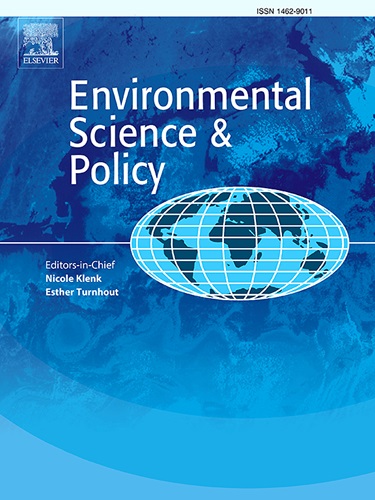Reading rivers from libraries: A participatory initiative to assess and improve urbanised rivers using citizen science
IF 4.9
2区 环境科学与生态学
Q1 ENVIRONMENTAL SCIENCES
引用次数: 0
Abstract
Public libraries can serve as a key starting point for initiating citizen participation projects related to the local environment. To illustrate this, we implemented the Llegim el riu project, a citizen participatory initiative aimed at engaging citizens in the assessment and management of rivers close to urban municipalities in the province of Barcelona. After a training exercise led by researchers, citizens and stakeholders were involved in both the diagnosis and the co-creation process of measures. To that purpose, several approaches were used such as interviews, surveys, workshops, dissemination of science, environmental education activities and citizen science tools. In particular, the project comprises 8 steps, where steps 1–5 were considered as the first round of the project, conducted in a training format and dynamized by university researchers and an NGO, while steps 6–8 were considered as the second round and conducted as a reinforcement. These steps consisted of: (1) a local tandem training (i.e. environmental and library technicians from each municipality), (2) a stakeholder field trip using the RiuNet citizen science tool to assess an urban river from each municipality, (3) an analysis of all available data from each sampling site, (4) a co-creation process of measures, (5) a second local tandem training, (6) same as step 2 but dynamized by both researchers and local tandem, (7) a review of the co-created measures, and (8) an implementation of at least one of the co-created measures. The third and subsequent rounds were the same as the second, but entirely dynamized by the local tandem. Citizen participation enhances the effectiveness of adaptive river management approaches by creating resilient and sustainable solutions for urban rivers, crucial for tackling current and future global challenges.
从图书馆阅读河流:利用公民科学评估和改善城市化河流的参与性倡议
公共图书馆可以作为启动与当地环境相关的公民参与项目的关键起点。为了说明这一点,我们实施了一项公民参与性倡议——Llegim el riu项目,旨在让公民参与到巴塞罗那省市区附近河流的评估和管理中来。在由研究人员领导的培训演习之后,公民和利益相关者参与了措施的诊断和共同创造过程。为此目的,采用了若干办法,如面谈、调查、讲习班、传播科学、环境教育活动和公民科学工具。特别是,该项目包括8个步骤,其中步骤1-5被认为是项目的第一轮,以培训形式进行,由大学研究人员和非政府组织进行,而步骤6-8被认为是第二轮,作为加强进行。这些步骤包括:(1)当地串联培训(即来自每个城市的环境和图书馆技术人员),(2)使用RiuNet公民科学工具进行利益相关者实地考察,以评估每个城市的城市河流,(3)分析每个采样点的所有可用数据,(4)共同制定措施的过程,(5)第二次地方串联培训,(6)与步骤2相同,但由研究人员和当地串联人员共同制定,(7)对共同制定的措施进行审查,(8)至少一种共同创造的措施的实施。第三轮和随后的几轮与第二轮相同,但完全由当地的串联组成。通过为城市河流创造有弹性和可持续的解决方案,公民参与提高了适应性河流管理方法的有效性,这对应对当前和未来的全球挑战至关重要。
本文章由计算机程序翻译,如有差异,请以英文原文为准。
求助全文
约1分钟内获得全文
求助全文
来源期刊

Environmental Science & Policy
环境科学-环境科学
CiteScore
10.90
自引率
8.30%
发文量
332
审稿时长
68 days
期刊介绍:
Environmental Science & Policy promotes communication among government, business and industry, academia, and non-governmental organisations who are instrumental in the solution of environmental problems. It also seeks to advance interdisciplinary research of policy relevance on environmental issues such as climate change, biodiversity, environmental pollution and wastes, renewable and non-renewable natural resources, sustainability, and the interactions among these issues. The journal emphasises the linkages between these environmental issues and social and economic issues such as production, transport, consumption, growth, demographic changes, well-being, and health. However, the subject coverage will not be restricted to these issues and the introduction of new dimensions will be encouraged.
 求助内容:
求助内容: 应助结果提醒方式:
应助结果提醒方式:


